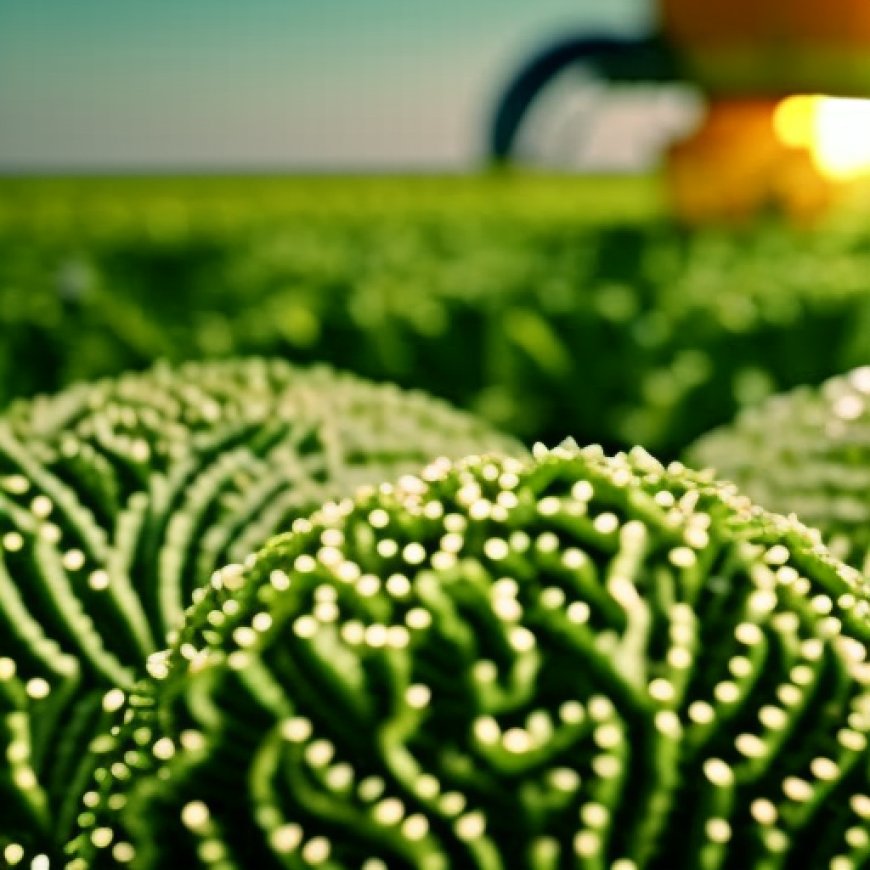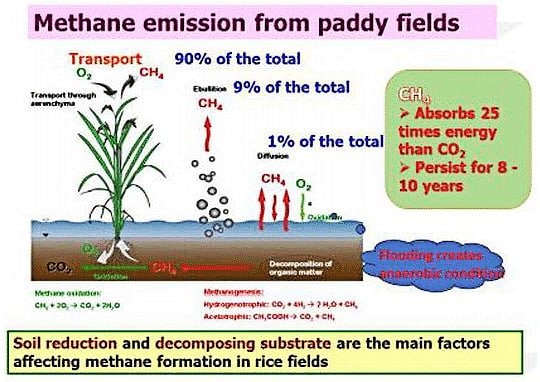Bayer, Shell, Temasek Partner to Cut Methane Emissions in Rice Cultivation by 30%
Bayer, Shell, Temasek Partner to Cut Methane Emissions in Rice ... CarbonCredits.com


Paddy Rice Cultivation Emissions
Global rice production will grow to meet the increasing demand from a 34% rise in the world population by 2050. This projected increase in production translates to more other greenhouse gas emissions.
Agriculture is the second largest emitting sector responsible for about 24% of global GHG emissions. The sector contributes between 10-12% of the global anthropogenic (man-made activities) GHG emissions.
Of global agricultural GHG released by rice fields, about 30% and 11% are from methane (CH4) and nitrous oxide (N2O), respectively. Paddy rice cultivation, in particular, represents about 10% of global methane emissions.
Methane is a more potent GHG with a global warming potential of more than 25x that of carbon dioxide. The image below from a study shows how methane is emitted from paddy rice fields.


Rice farms take up over 150 million hectares of land worldwide, occupying 15% of the global farmland.
For successful climate-smart rice cultivation, there must be changes in rice management practices to decrease their planet-warming emissions. A robust and scalable approach is needed to encourage methane emissions reductions in paddy rice cultivation.
Bayer and its partners aim to achieve significant results in decarbonizing rice production, helping enhance soil health while benefiting small farmers. Their project focuses on rice cultivation in India, the second-largest producer of rice globally.
Bayer Climate Strategy for Net Zero
Being the global leader in the agriculture sector under its Crop Science division, Bayer seeks to improve rice management practices by promoting climate-smart activities that economically and environmentally benefit both the farmers and the planet.
For the past 2 years, the company has performed the groundwork needed for the project under its “Sustainable Rice Project” in India. It particularly aims to fight climate change by promoting carbon reductions in growing rice.
The project encourages rice farmers to adopt new techniques such as Direct Seeded Rice (DSR) and Alternate Wetting & Drying (AWD). DSR is a practice that doesn’t involve transplanting operations and AWD which involves controlled and intermittent flooding.
Both modern farming practices help reduce the amount of GHG released by rice cultivation while allowing farmers to earn more from their reduced GHG emissions through carbon credits. Each credit represents a tonne of reduced carbon emissions. In voluntary carbon markets, carbon credits are also called carbon offsets.
Since 2020, Bayer has been rewarding farmers with carbon credits by adopting climate-smart (carbon farming) practices, giving them more revenue. Its Carbon Initiative enables Bayer to develop a science-based and collaborative approach to bringing the carbon market to agriculture.
All these efforts in working closely with the farmers are part of the company’s sustainability commitments and net zero targets. They particularly aimed at reducing in-field GHG emissions (per kilogram of crop yield) by 30% in 2030.
Bayer Net Zero Pathway
Join us, as fellow seekers of change, on a transformative journey at https://sdgtalks.ai/welcome, where you can become a member and actively contribute to shaping a brighter future.








